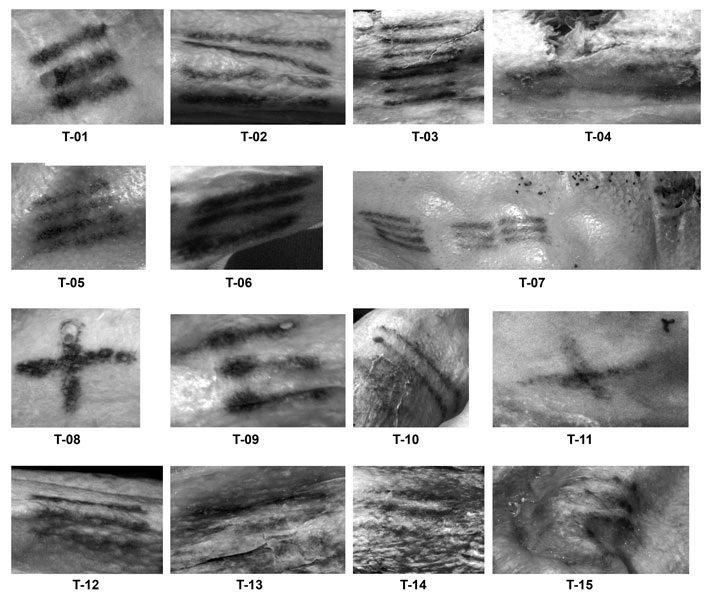 NASHVILLE, TENNESSEE—Phys.org reports that a new study tested different tattoo methods on living skin in an attempt to determine how the tattoos found on the lower back, abdomen, lower legs, and left wrist of Ötzi the Iceman were produced. The 5,200-year-old frozen remains belonging to the individual known as Ötzi the Iceman were discovered in the Italian Alps by hikers in 1991. Aaron Deter-Wolf of the Tennessee Division of Archaeology and his colleagues, working with a modern tattoo artist, recreated Ötzi’s ancient tattoos on a living person with four tattooing techniques, including making an incision in the skin and introducing color into the incision; hand poking; subdermal tattooing; and hand tapping. Researchers had previously thought that the incision method may have been used to make Ötzi’s tattoos, since many of them are made up of short, straight lines. After the test subject’s skin had healed, the researchers photographed the new tattoos and compared them with Ötzi’s. They found that the tattoos produced by hand-poking the skin with a sharpened stick dipped in colored ink produced lines made up of tiny overlapping disks that were the most similar to the marks found on Ötzi’s body. For more, go to "Ancient Tattoos: Ötzi, the Iceman."
NASHVILLE, TENNESSEE—Phys.org reports that a new study tested different tattoo methods on living skin in an attempt to determine how the tattoos found on the lower back, abdomen, lower legs, and left wrist of Ötzi the Iceman were produced. The 5,200-year-old frozen remains belonging to the individual known as Ötzi the Iceman were discovered in the Italian Alps by hikers in 1991. Aaron Deter-Wolf of the Tennessee Division of Archaeology and his colleagues, working with a modern tattoo artist, recreated Ötzi’s ancient tattoos on a living person with four tattooing techniques, including making an incision in the skin and introducing color into the incision; hand poking; subdermal tattooing; and hand tapping. Researchers had previously thought that the incision method may have been used to make Ötzi’s tattoos, since many of them are made up of short, straight lines. After the test subject’s skin had healed, the researchers photographed the new tattoos and compared them with Ötzi’s. They found that the tattoos produced by hand-poking the skin with a sharpened stick dipped in colored ink produced lines made up of tiny overlapping disks that were the most similar to the marks found on Ötzi’s body. For more, go to "Ancient Tattoos: Ötzi, the Iceman."
Recreating Ötzi the Iceman’s Tattoos
